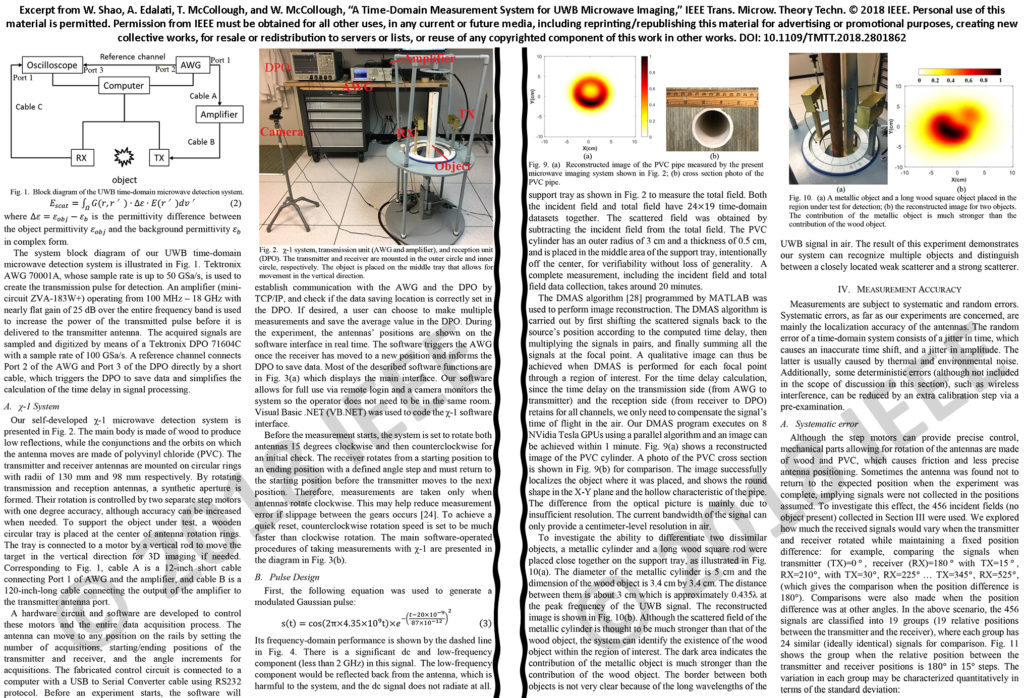I am pleased that a paper titled “A Time-Domain Measurement System for UWB Microwave Imaging” has been published in IEEE Transactions on Microwave Theory and Techniques, in 2018, that I am a co-author on through work with the Celadon Research Division of Ellumen Inc. This paper discusses a fully automatic time domain measurement system for microwave imaging using a pair of movable antennas to transmit and receive custom UWB pulse designs. The system described in the paper incorporates some elements from the Microwave Imaging Device patent previously discussed where a pair of movable antennas are independently controlled to rotate around a region of interest. This paper builds upon work previously presented in 2017, in IEEE Transactions on Microwave Theory and Techniques in the paper “A Phase Confocal Method for Near-Field Microwave Imaging” and at the IEEE AP-S Symposium on Antennas and Propagation and USNC-URSI Radio Science Meeting in the the poster presentation titled “Experimental Microwave Near-field Detection with Moveable Antennas.” The prior two works discussed using the system in the frequency domain with a vector network analyzer to generate and receive signals. In this new paper the time domain use of the system is described using an arbitrary waveform generator to generate signals and a digital phosphor oscilloscope to receive signals.
I have included an excerpt from the accepted version of the paper below. DOI: https://doi.org/10.1109/TMTT.2018.2801862 © 2018 IEEE. Personal use of this material is permitted. Permission from IEEE must be obtained for all other uses, in any current or future media, including reprinting/republishing this material for advertising or promotional purposes, creating new collective works, for resale or redistribution to servers or lists, or reuse of any copyrighted component of this work in other works.
Figure 2 in the paper shows the system as was set up at Ellumen Inc. along with a PVC cylinder placed in the middle tray. A reconstructed image from data collected using the setup in Figure 2 using the delay multiply and sum (DMAS) imaging algorithm is shown in Figure 9. In Figure 10(a) the object was changed to a metallic object and a long wood square object both placed in the middle tray. A reconstructed image produced using DMAS is shown in Figure 10(b). Also note that the DMAS algorithm was programmed on eight nVidia Tesla GPUs which allowed images to be produced in under 1 minute. A comparison between the time domain system and frequency domain system was performed in the paper but is not included in the above excerpt. This analysis showed that both methods of data collection can allow for accurate reconstructed images to be obtained. The software to control the data collection was also updated as presented in this paper so that it takes 20 minutes to complete both incident and total field data collections. I encourage you to download and read the full “A Time-Domain Measurement System for UWB Microwave Imaging” paper from IEEE for full details and analysis.

